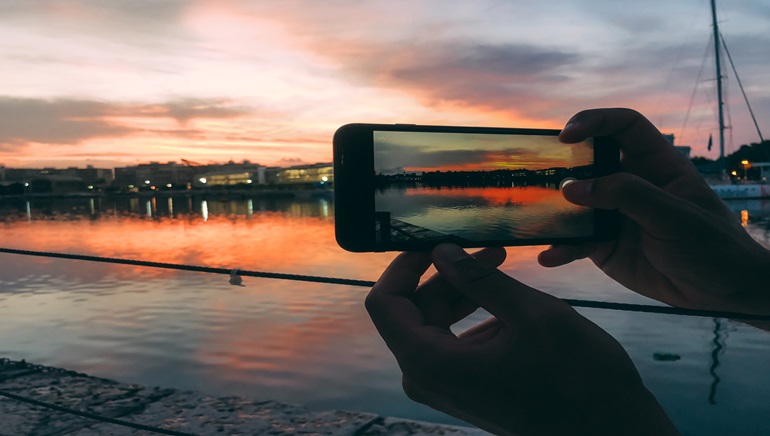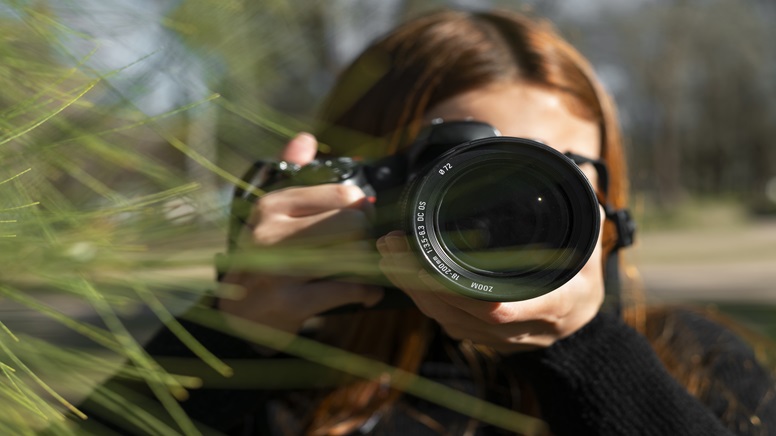Why Golden Hour is the Best Time for Outdoor Photography
Golden Hour, also known as the ‘magic hour’ is the term that has Appalachian pre-eminence for any photographer in the world. This is true when it is used at dawn or twilight, during dusk, and at other times when the light source seems to divide a night and a new day or a day and night.
1. What Is Golden Hour?
Embracing the Magic of Golden Hour in Photography
Golden Hour is a time within a day, during which the sun is at the lowest point above the horizon and the light has to pass through more of the Earth’s atmosphere.
- Lens: The lens is the actual lens which is used in your camera. It determines how light gets to the camera and how it is magnified on to the camera’s interior surface . Various accessories are designed for distinct roles, for instance, broad lenses for shooting landscapes and tele lenses for distant objects.
- Aperture: This is the aperture in the lens that determines the quantity golden hour of light that is allowed into the chamber. The aperture is expressed in the f-stop number where the lower number means the greater light rate and a small portion of the picture is in focus while the background is blurred.
- Shutter Speed: The shutter speed is responsible for regulating the amount of time which the camera sensor is open to light. A fast speed of shutter time will capture the object without any motion blur while the slow speed of shutter time will create blur due to the motion of the object.
- ISO: Often your camera already has built-in controls and ISO measures the sensitivity of the capture device to light. The low ISO is effective under a bright environment while the high ISO enables capturing images under a low light environment though with more noise.
Related: https://rvrsp.in/top-photography-tips-for-beginners/
Future Ready How RVR School of Photography Equips Students for Industry Success By Simran
2. Advantages of Golden Hour in the Morning.
Maximizing the Golden Hour Capturing Stunning Shots During Sunrise
- Fewer Crowds: The first and maybe the most crucial of the golden hour shooting advantages is the absence of people. Some of the sites that are crowded with people during the day will be found with no people in the morning when such shots are taken.
- Cooler Tones: Also most of the photographers must know the fact that golden hour light during sunrise is less harsh and it is blueish. This leads to the creation of very relaxed and peaceful pictures, probably useful when you want to capture a scene of tranquillity of water, or honeymooners.
- Long Shadows: This is so because at this time, the shadows are long and diffused, thus minimizing uniformity in your pictures. It is possible to use them in a great number of cases to create depth using those areas of the picture to which the viewer’s attention is drawn beginning at the center of the screen.
- Perfect for Silhouettes: That’s why, Sunrise Golden Hour is also a great time to start playing with backlighting to get a great silhouette. Have your subject stand in a manner whereby he or she is positioned facing the rising sun and in one position that is parallel to the camera also adjust the settings of your camera so that the background is overexposed to cater for the silhouette outlook.
3. Additional Tips for Sunrise Photography
Enhance Your Sunrise Photography with These Essential Techniques
- Plan Ahead: The Sunrise Golden Hour is usually short and so there is often need to make solid shooting plans. Survey the ground where the event will be held one day before the event to identify good positions to set your equipment, then try to get there early enough to fix all your equipment.
- Use a Tripod: It may be low light in the early morning or dawn and this may demand slow exposure settings if the pictures are to be taken of the landscape. A tripod will help you easily bring to a golden hour halt your camera from moving hence eliminate the issue of motion blur.
- Experiment with Composition: Do not miss an opportunity to experiment with the positions during the rim light and apply chill hues within the captures. It is much better to try out such techniques as shooting from a low altitude so that what is foreground is emphasized or the use of leading lines to direct the attention of the viewer to the object of focus.
- Sunset Golden Hour: Method for Winning a Lot of Looking and Attractive to the Opposite Gender Photos Hence, at the end of the day during the so-called Golden Hour, there is warm and romantic light which will be suitable for depicting emotions. The light during this period is different from the other periods of the year because the sun puts out the light, which is richer in heat and hues.
Related: https://rvrsp.in/product-photography-tips-showcasing-your-products/
4. Best Time for Outdoor Photography: Tips for Capturing Stunning Sunset Photos
Essential Techniques for Stunning Sunset Photography
- Golden hour: the golden hour right after sunrise or an hour before sunset – that is perfect for shooting. This is the best time to capture great sunsets and to do this, one needs to employ some skills as well as ideas.
- Position Subjects Facing the Sun: Last but not least to get a naturally warm and rather pleasant skin colour make your subjects face the sun as shown below. This should assist in getting the natural radiant, golden look on their face, that they seek. In portraits, according to the type and quality of the skin, it can improve the luminosity of the skin, which in turn will make a person appear more alive.
- Experiment with Backlighting: In the Golden Hour it would be as often as not that backlighting could be rather beautiful silhouettes and several rather dramatic ones. Perfect your subject by putting it at the focus and underexpose the background to capture the silhouette against the background of the sunset.
- Capture the Changing Sky: It keeps one of the most fascinating aspects of the sunset Golden Hour as the Costa-Blanca changes the colors in the sky. At night, most of the colors that have been used to create the photo switch from the orange and yellow colour of the sand to the various shades of purple and blue. These stages can be used as the background of the photos so that the scene acquires a touch of drama and grace.

5. Additional Tips for Sunset Photography
Advanced Techniques for Capturing Stunning Sunset Photos
Shooting a proper sunset is a combination of skill, timing, and some kind of inspiration. Here are some additional tips to help you enhance your sunset photography: are some additional tips to help you enhance your sunset photography:
- Use Reflectors: In fact, this could have been a good decision to accompany the sunset Golden Hour portraits with a reflector to charge up on the shadowy parts. It can help to ‘paint in’ areas that are lost or enable the scene to be balanced to provide a better follow to the creative concept that the exposure has been needed for.
- Shoot in RAW: Shooting with RAW is more favorite when you are editing because you have more information to change. All of this could be tweaked –albeit slightly: sharpness, color, and white balance And when all of this has been taken into account, it would be possible to get the most out of the warm golden hour sunset.
- Be Patient: The Sunset Golden Hour is not much of an idle time because the light including all the colors is dynamic. [Rose] Stand and shoot a series as the sun sets, and the light changes.
- Overcast & Cloudy Photoshoots: Why These Days May Work for You While Golden Hour is probably the pick of the time and day for taking shots outdoor, consider overcast and cloudy days. People can swim even in cloudy weather since there are no direct lights, there are no very sharp contrasts, and shadowy areas.
6. Advantages of Shooting on Overcast Days
Embracing Overcast Weather for Stunning Photos
Shooting on overcast days has several advantages which are peculiar to photography. It disperses the intense rays of the sun and there are no sharp and intense shadows something that makes for very evenly-illuminated photos.
- Soft, Even Lighting: It may well be that the best argument for overcast days learning is that there is no ‘glisten’ added to any portion of the object. Of all these four aspects, all depend on the weather condition in that the clouds in a way soften the light by diffusing it hence making the shadows and the highlights less severe. This leads to good exposure, which is as important in portrait photography as making all skin tones pleasant and all colors accurate.
- Muted Colors: At times especially when it is cloudy it becomes somewhat so lit and the results in the pictures are somewhat shady. The main use of the muted color is that it adds depth and emotion to the pictures, and at the same time, sets back to the personal. This can be particularly useful for shootings of raw feelings in better still an art shot.
- Perfect for Outdoor Family Photos: The next time that you are planning a photo session with members of your family and the weather forecaster has informed the public that the heavens are going to be grey then you know that is good weather to hire the equipment and have your family pictures taken. The soft light also performs the role of reducing the possibility of flaws and skin blotches and this is good in developing an improved visual image.
- Flexibility in Posing: In actualization, what makes cloudy days conducive especially when it comes to positioning and formation of shots is that they are mechanical. The matter of his or her hard shadows or areas of heavy light is completely gone, which means that it is not difficult at all to find the appropriate pose and viewpoint.
7. Additional Tips for Cloudy Day Photography
Maximizing Your Cloudy Day Photography Potential
Photography on a cloudy day can provide unordinary moments to make a rather dark and smooth photoshoot. Here are some additional tips to make the most of overcast conditions: Here are some additional tips to make the most of overcast conditions:
- Use a Reflector or Flash: First of all, the diffused light which is considered to be appropriate for photography on a cloudy day, might produce a photographer’s flat and non-warm images. Of course there are always chances when one can try with at least a reflector and even if nothing is available the chances are one could always go for the higher contrast shots using fill flash.
- Embrace the Mood: You can see that, very often, it is incorrect to assume that it is possible to get bad shots on a cloudy day; on the contrary, there is a certain kind of intensity of being in the world on such days. Golden Hour Try using this mood for taking black and white photos, or, try using a greater aperture for the more limited field and closer to the object images.
- Shoot for Detail: As it will be observed cloudy light is fairly balanced and in terms of scene definition aspects that a photographer is putting in a frame the elements whether it be architecture, a landscape, or even a face can be drawn in detail. On the people, zoom into the faces and take some close-up shots, or the veins of the flowers or other small things if you are shooting nature.
- Creative Solutions for Harsh Midday Light: Utilizing Any Situation While it is most advised a photographer should go out shooting during the Golden hour, the majority of the time a photographer might end up shooting during midday. This is a direct, sharp and intense light and as such gives off bad and unwanted shadows, low contrast as well as overexposed photographs at this time. However, you should not despair for there are a few things that would make it possible to take great photos even when the lighting is poor.

8. Ways to Shade at Midday.
Essential Techniques for Overcoming Harsh Light
Taking photographs at mid-day is difficult because the light is very direct causing many black and white shadows wherever the camera is pointed and some overexposure of the images takes place.
- Seek Out Shade: The only way of handling hard light when shooting during midday is by seeking low light conditions. During your shooting ensure that your subjects are positioned in a way that trees or buildings block the direct sun from lighting the frame.
- Use Reflectors: I would like to comment that Reflector turns out to be a very handy tool when it comes to shooting extremely bright midday sun. In this way, you are also able to control particularly the intensity and quality of the light, and minimize such negative factors as shadows or underexposure of the part of the scene that requires additional illumination as a golden hour
- Experiment with Angles: Subdue the acuity that comes from the position of the light at midday which leads to blush and bleak shadows and highlights. Therefore, it would be good to attempt to then adjust the position, and composition of the shot to help combat such lighting conditions.
- Embrace High Contrast: Even though harsh light particularly during the middle of the day is regarded to cause tough light most photographers avoid it, it is also useful to produce contrast images. Be obsessed with high contrast and learn how to put those contrasts in your pictures to make them great and quite dangerous as Golden hour
Conclusion
Fundamentally, Golden Hour is the best time in which one can take the best photos especially if you are shooting outside since it has a soft warm light, and long shadows, and the colors are rich more so the yellowish colours that complement the beauty of your photos. Whether you are taking pictures of beautiful sceneries or people or just documenting the moments of life, Golden Hour is an additional feature that will assist you in reaching that marvelous light that stirs people’s emotions and which is behind the most beautifully lit photos.
Clarify Your Doubts (FAQ's)
We reimburse all expenses of the Client for the payment of fines and penalties that were caused by mistakes made by us in accounting and tax accounting and reporting.
We reimburse all expenses of the Client for the payment of fines and penalties that were caused by mistakes made by us in accounting and tax accounting and reporting.
We reimburse all expenses of the Client for the payment of fines and penalties that were caused by mistakes made by us in accounting and tax accounting and reporting.
We reimburse all expenses of the Client for the payment of fines and penalties that were caused by mistakes made by us in accounting and tax accounting and reporting.
We reimburse all expenses of the Client for the payment of fines and penalties that were caused by mistakes made by us in accounting and tax accounting and reporting.
We reimburse all expenses of the Client for the payment of fines and penalties that were caused by mistakes made by us in accounting and tax accounting and reporting.
We reimburse all expenses of the Client for the payment of fines and penalties that were caused by mistakes made by us in accounting and tax accounting and reporting.
We reimburse all expenses of the Client for the payment of fines and penalties that were caused by mistakes made by us in accounting and tax accounting and reporting.

